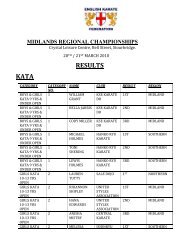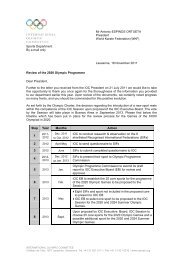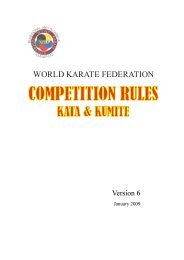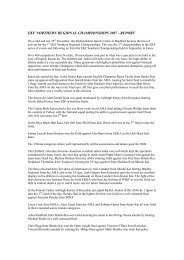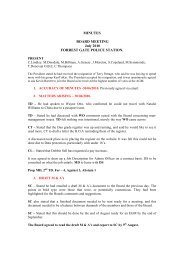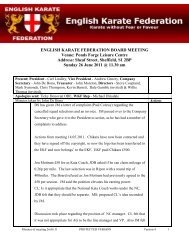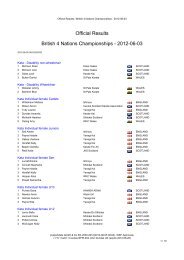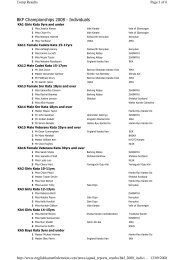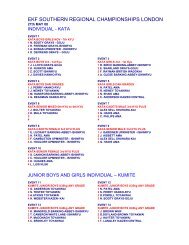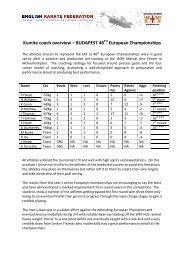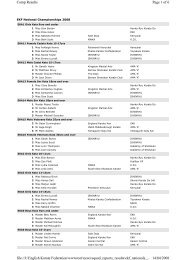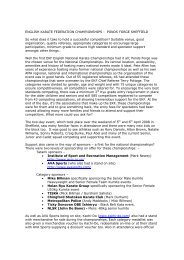WKF Rules Version 7.1.pdf - Karate New Brunswick
WKF Rules Version 7.1.pdf - Karate New Brunswick
WKF Rules Version 7.1.pdf - Karate New Brunswick
Create successful ePaper yourself
Turn your PDF publications into a flip-book with our unique Google optimized e-Paper software.
13ARTICLE 8:PROHIBITED BEHAVIOURThere are two categories of prohibited behaviour, Category 1 and Category 2.CATEGORY 1.1. Techniques which make excessive contact, having regard to the scoring area attacked, andtechniques which make contact with the throat.2. Attacks to the arms or legs, groin, joints, or instep.3. Attacks to the face with open hand techniques.4. Dangerous or forbidden throwing techniques.CATEGORY 2.1. Feigning, or exaggerating injury.2. Exit from the competition area (JOGAI) not caused by the opponent.3. Self-endangerment by indulging in behaviour, which exposes the contestant to injury by theopponent, or failing to take adequate measures for self-protection, (MUBOBI).4. Avoiding combat as a means of preventing the opponent having the opportunity to score.5. Passivity – not attempting to engage in combat.6. Clinching, wrestling, pushing, seizing or standing chest to chest, without attempting a throw orother technique.7. Techniques, which by their nature, cannot be controlled for the safety of the opponent anddangerous and uncontrolled attacks.8. Simulated attacks with the head, knees, or elbows.9. Talking to, or goading the opponent, failing to obey the orders of the Referee, discourteousbehaviour towards the Refereeing officials, or other breaches of etiquette.EXPLANATION:I. <strong>Karate</strong> competition is a sport, and for that reason some of the most dangerous techniques arebanned and all techniques must be controlled. Trained adult competitors can absorbrelatively powerful blows on muscled areas such as the abdomen, but the fact remains thatthe head, face, neck, groin and joints are particularly susceptible to injury. Therefore anytechnique, which results in injury, may be penalised unless caused by the recipient. Thecontestants must perform all techniques with control and good form. If they cannot, thenregardless of the technique misused, a warning or penalty must be imposed. Particular caremust be exercised in Cadet and Junior competition.II.III.FACE CONTACT — SENIORS: For Senior competitors, non-injurious, light, controlled―touch‖ contact to the face, head, and neck is allowed (but not to the throat). Where contactis deemed by the Referee to be too strong, but does not diminish the competitor’s chances ofwinning, a warning (CHUKOKU) may be given. A second contact under the samecircumstances will result in KEIKOKU. A further offence will result in HANSOKU CHUI.Any further contact, although not significant enough to influence the opponent’s chances ofwinning, will still result in HANSOKU.FACE CONTACT — CADETS AND JUNIORS: For Cadet and Junior competitors nocontact to the head, face, or neck, (including the face mask) is allowed with hand techniques.* VERSION 7.1 – Effective from 01.01.2012



